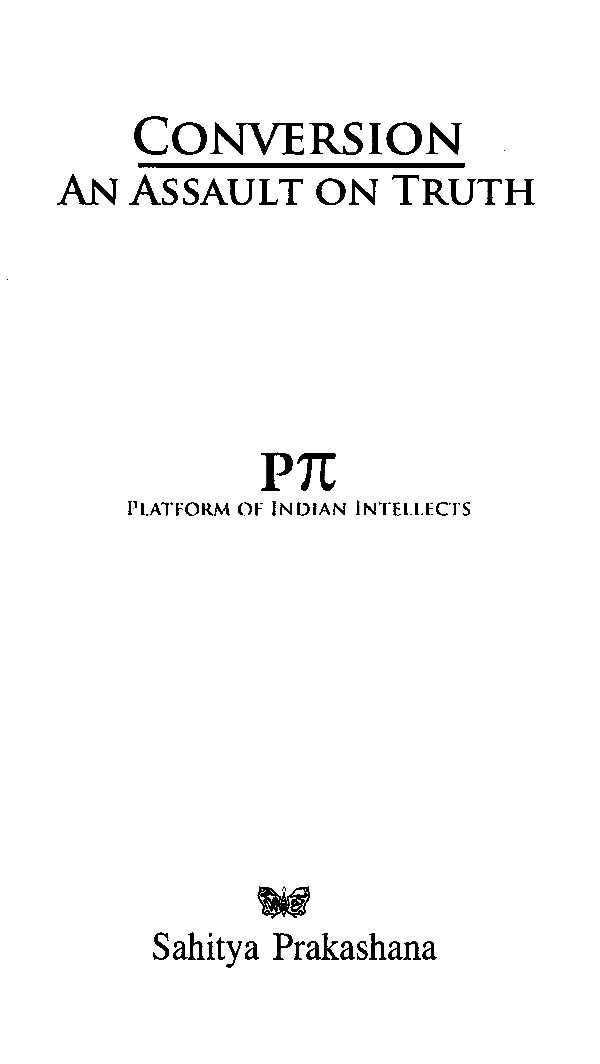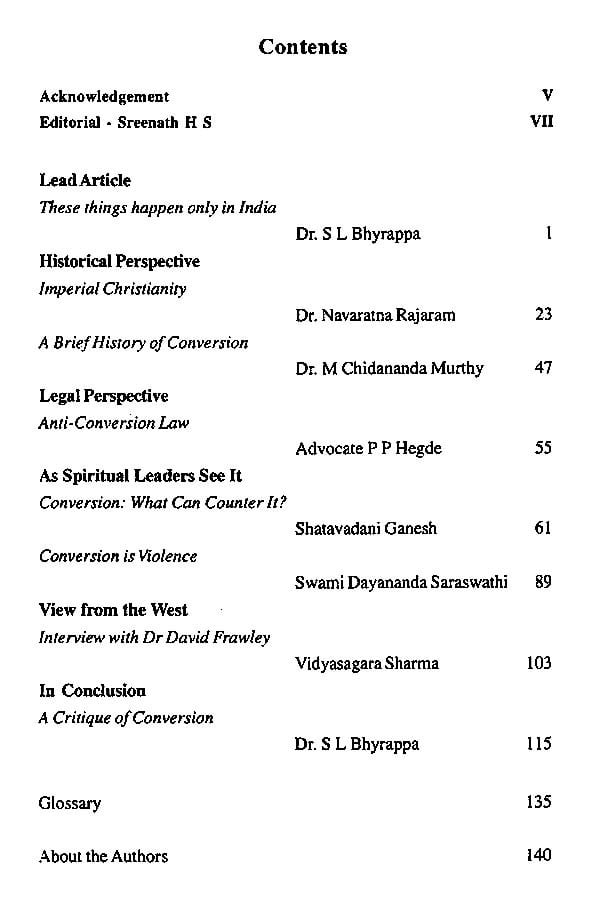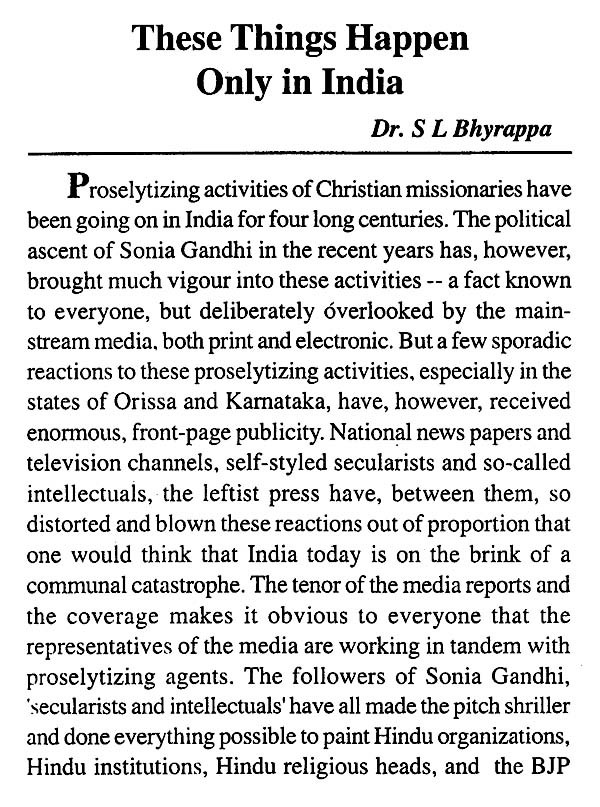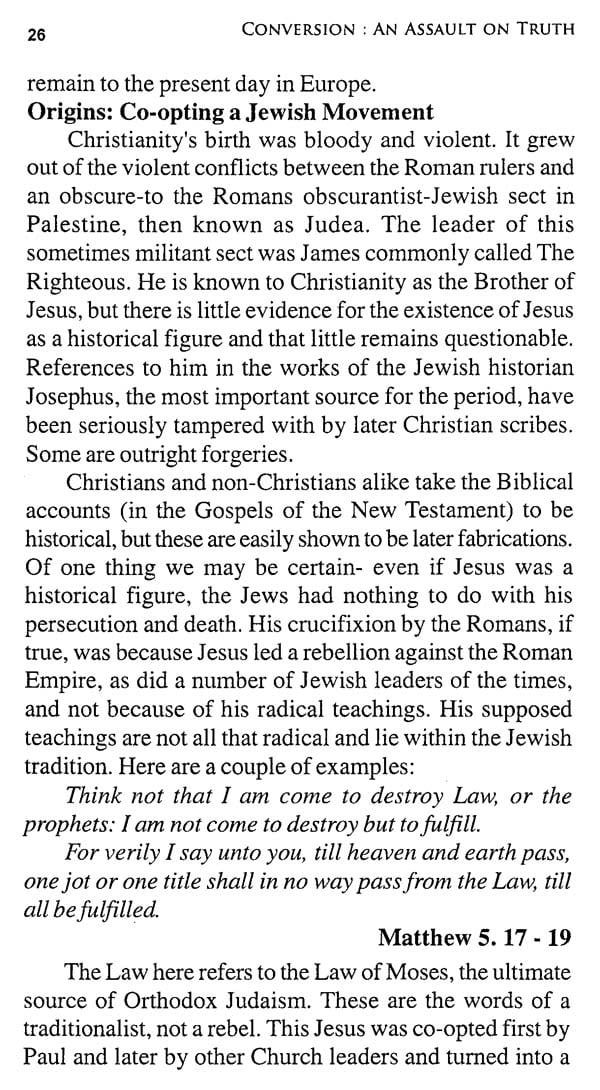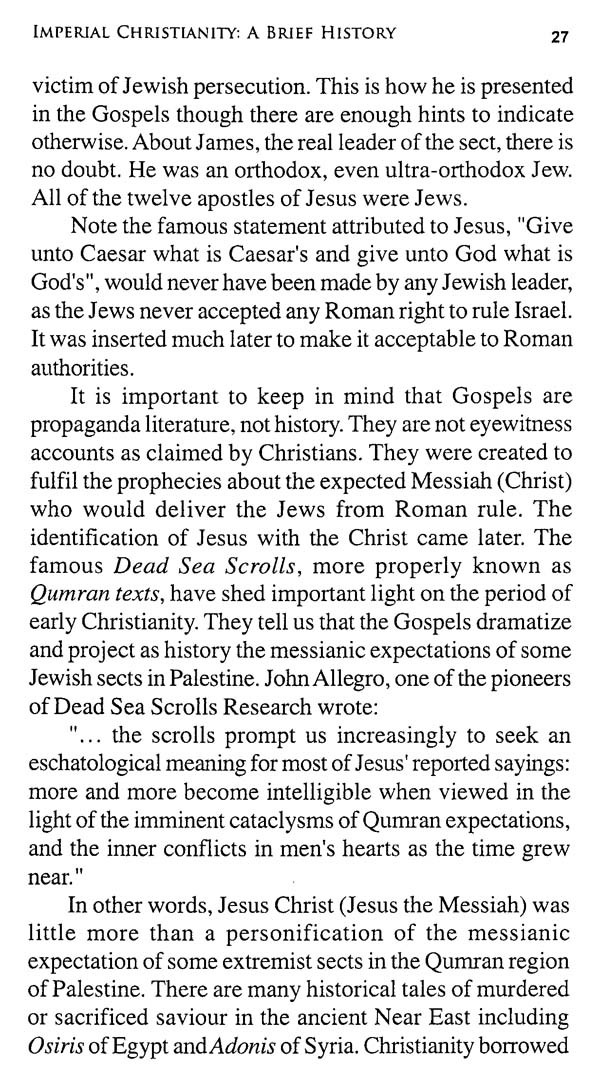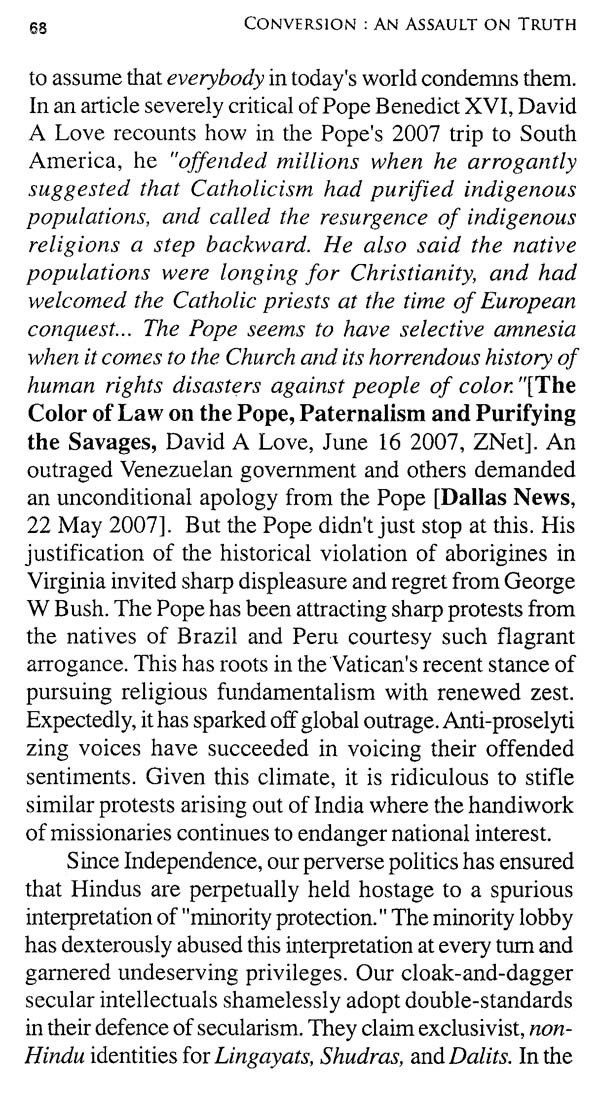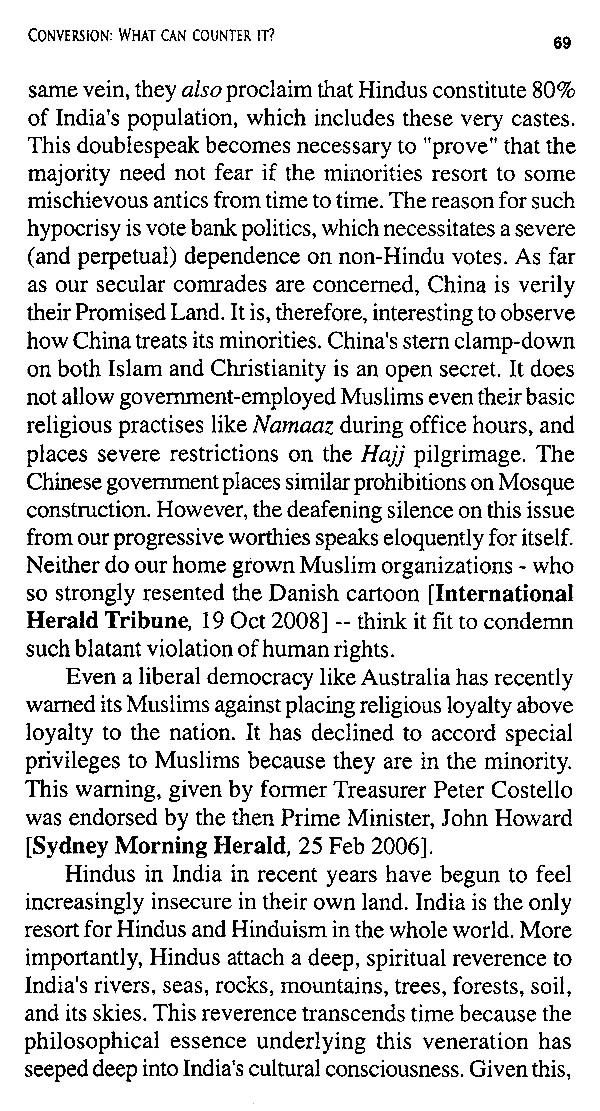
Conversion- An Assault on Truth
Book Specification
| Item Code: | AZE337 |
| Author: | H.S. Srinath |
| Publisher: | SAHITYA PRAKASHANA, KARNATAKA |
| Language: | ENGLISH |
| Pages: | 144 |
| Cover: | PAPERBACK |
| Other Details | 8.50x5.50 inches |
| Weight | 190 gm |
Book Description
The cover photograph is that of the Vishna temple at Angkor Wat, Cambodia Angkor was the capital of the Khmer or the Kambega empire. Will Durant describes this temple as a masterpiece equal to the finest architectural achievements of the Egyptains, the Greeks or the cathedral builders of Europe".
Who built this temple and when it got to be built are some of the questions that have remained unanswered. Philip Rawson introduces his book The Art of Southeast Ann with the following words:
The culture of India has been one of the world's most powerful civilizing forces. Countries of the Far East, including China, Korea, Japan, Tibet and Mangolia owe much of what is best in their own cultures to the inspiration of ideas imported from India. The West too, has its own debts. But the members of that circle of civilizations beyond Burma scattered around the Gulf of Siam and the Java Sea. virtually owe their very existence to the creative influence of Indian ideas....No conquest or invasion, no forced conversion imposed them. They were adopted because the people saw they were good and they could use them...thear code of living, their conceptions of law and kingship, their rich literature and highly evolved philosophy of life".
**Contents and Sample Pages**
